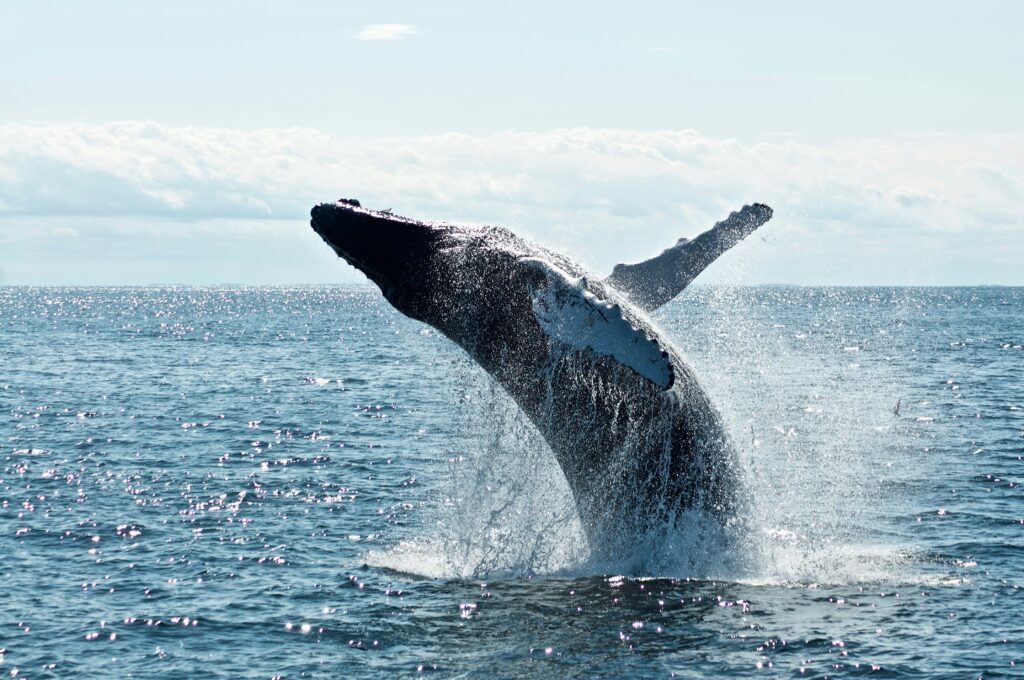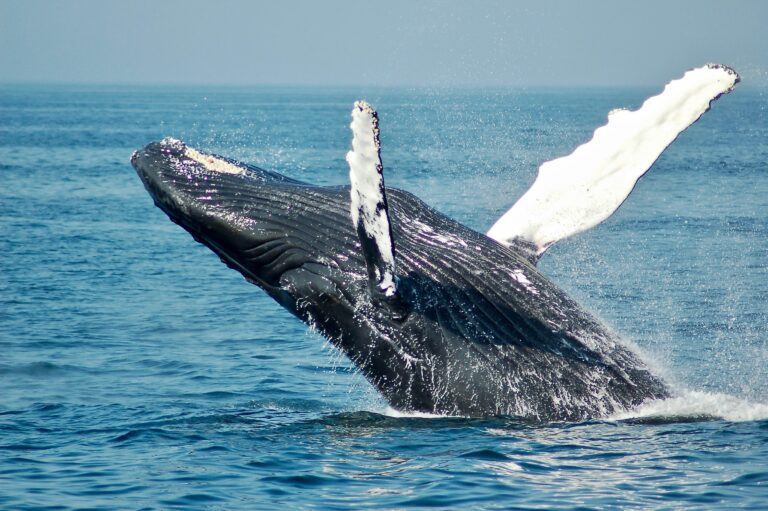Whales, the majestic giants of the oceans, have captivated human fascination for centuries. Their sheer size, enigmatic behaviors, and mysterious lives beneath the waves have inspired awe and wonder. Among the many aspects of whale biology and behavior that continue to intrigue scientists and enthusiasts alike, migration patterns stand out as a particularly fascinating phenomenon. In this article, we delve into the world of whale migrations, exploring the reasons behind these epic journeys, the routes they take, and the significance of these movements in the lives of these marine mammals.
Environmental factors influencing whale migration
Whale migration is significantly influenced by various environmental factors, each playing a crucial role in shaping the migratory patterns of these marine giants. These factors include temperature, food availability, and the overall condition of the marine ecosystem.
Temperature:
Temperature is a key driver of whale migration, especially for species that inhabit polar or equatorial regions. Whales often move to warmer waters for breeding and calving, providing a more suitable environment for their offspring. Conversely, some species migrate to cooler waters to access abundant food sources during specific seasons.
Food Availability:
The availability of food resources is a major determinant of whale migration. Many whale species follow the movement of their prey, such as krill, fish, or squid, which can vary in abundance and distribution across different regions and seasons. The migration allows whales to optimize their feeding opportunities and ensure an adequate food supply to sustain themselves and their young.
Ocean Currents:
Ocean currents play a crucial role in shaping the migratory routes of whales. Whales often use these currents to facilitate their journeys, conserving energy and reducing the effort required for swimming. Understanding the intricate network of ocean currents is essential for comprehending the pathways and timing of whale migration.
Reproduction and breeding cycles
Reproduction and breeding cycles are fundamental drivers of whale migration, influencing the timing and destinations of their journeys. These cycles are intricately linked to environmental factors and play a vital role in the perpetuation of whale populations.
Breeding Grounds:
Whales migrate to specific breeding grounds where environmental conditions are conducive to mating and calving. These areas provide protection for newborn calves and contribute to the overall reproductive success of the population. The journey to and from these breeding grounds is a well-coordinated effort driven by the innate reproductive instincts of these marine mammals.
Calving Season:
The timing of migration often aligns with the calving season, ensuring that whales give birth in regions where the chances of survival for their offspring are optimal. The migration to calving areas also helps in avoiding predators and providing a relatively safe environment for nurturing the next generation.
Predator-Prey Relationships
The intricate dynamics of predator-prey relationships significantly influence the migratory behavior of whales. Whales, as both predators and prey, respond to these relationships by adjusting their migration patterns to enhance survival.
Avoiding Predators:
Whale species often migrate to escape or minimize interactions with natural predators, such as killer whales or large sharks. This instinctual response contributes to the overall survival of the species and ensures that they can navigate safely through their migratory routes.
Following Prey:
On the flip side, whales may migrate to areas where their primary prey is abundant. This ensures a stable and sufficient food supply, allowing them to thrive and maintain healthy populations. The delicate balance between predator and prey influences the evolutionary adaptation of whales and shapes their migration strategies.
Notable Whale Migration Routes
Whale migration encompasses some of the most extraordinary journeys undertaken by any mammal on the planet. Here are examples of well-documented migration routes that showcase the remarkable travels of these marine giants.
Gray Whales along the Pacific Coast:
One of the most iconic whale migration routes is that of the gray whale along the Pacific coast of North America. Every year, thousands of gray whales embark on a journey spanning thousands of miles, traveling from their feeding grounds in the Arctic to their breeding and calving lagoons in Baja California, Mexico, and back. This migration route is celebrated by coastal communities and attracts numerous tourists eager to witness the spectacle of these majestic creatures passing by.
Humpback Whales in the North Atlantic:
Humpback whales in the North Atlantic undertake an impressive migration between their feeding grounds in cold, high-latitude waters and their breeding areas in warmer, tropical regions. These whales travel thousands of miles, navigating through open ocean and along coastlines as they move between their disparate habitats. The waters off the coasts of New England and the Caribbean are particularly renowned for sightings of humpback whales during their migration.
Blue Whales in the Southern Hemisphere:
Blue whales, the largest animals on Earth, are known for their extensive migrations in the Southern Hemisphere. These magnificent creatures travel vast distances between their feeding grounds in polar waters and their breeding areas in more temperate or tropical regions. The waters around Antarctica and the Southern Ocean are prime locations for observing blue whales during their migration, offering researchers valuable insights into their behavior and ecology.
Global distribution of migratory whale species
Migratory whale species exhibit a diverse global distribution, with populations found in various ocean basins around the world. Understanding the geographical range of these species is essential for conservation efforts and for comprehending the interconnectedness of marine ecosystems.
Arctic and Subarctic Regions:
In the Arctic and subarctic regions, species such as the bowhead whale, beluga whale, and narwhal undertake seasonal migrations between their feeding and breeding grounds. These areas are characterized by icy waters and support unique whale populations adapted to the extreme conditions of the northern latitudes.
Tropical and Temperate Zones:
In tropical and temperate zones, migratory whale species include humpback whales, blue whales, and various dolphin species. These regions provide important breeding and calving areas for whales, as well as abundant food resources during certain times of the year. Coastal areas in places like Hawaii, Australia, and the Mediterranean are popular destinations for whale watching during migration seasons.
Challenges in tracking and studying whale migrations
Studying whale migrations presents numerous challenges due to the vast distances involved, the remote nature of many migration routes, and the elusive behavior of these marine mammals. Despite technological advancements, researchers continue to face obstacles in accurately tracking and studying whale migrations.
Remote and Inaccessible Locations:
Many whale migration routes traverse remote and inaccessible locations, such as open ocean or polar regions. This makes it challenging for researchers to collect data directly from the whales or to deploy tracking devices effectively.

Limited Duration of Surface Observations:
Surface observations of whales provide valuable information, but they are limited by factors such as weather conditions, visibility, and the brief periods when whales surface to breathe. This restricts the amount of data that can be collected and may result in gaps in our understanding of migration patterns.
Technological Limitations:
While satellite tagging and acoustic monitoring have revolutionized our ability to track whale migrations, these technologies have limitations. Tagging devices may detach prematurely or malfunction, and acoustic monitoring is dependent on the deployment of hydrophones in specific locations, which may not cover the entire migration route of a whale population.
Conservation and Management Implications:
The challenges in tracking and studying whale migrations have implications for conservation and management efforts. Without comprehensive data on migration patterns and behaviors, it is difficult to implement effective conservation measures or to assess the impact of human activities on migratory whale populations. Continued research and innovation are essential for overcoming these challenges and ensuring the protection of these magnificent creatures for future generations.
VIDEO CREDITS: NGS
FAQs
Q. What are migration patterns and why do whales migrate?
A. Migration patterns refer to the seasonal movements of whales from one area to another. Whales migrate for various reasons, including breeding, feeding, and avoiding extreme weather conditions.
Q. How far do whales migrate?
A. The distance whales migrate can vary greatly depending on the species. Some whales, like the gray whale, undertake long migrations of thousands of miles each year, while others may have more localized movements.
Q. Do all whales migrate?
A. No, not all whales migrate. Some species, like the resident populations of killer whales, may have more localized movements and not undertake long-distance migrations.
Q. How do whales navigate during migration?
A. Whales use a variety of methods to navigate during migration, including using the Earth’s magnetic field, celestial cues such as the position of the sun and stars, and possibly even acoustic landmarks.
Q. What are some common migration routes for whales?
A. Common migration routes for whales include the north-south migrations of species like humpback whales between feeding and breeding grounds, as well as east-west migrations of species like gray whales between feeding and breeding areas.



